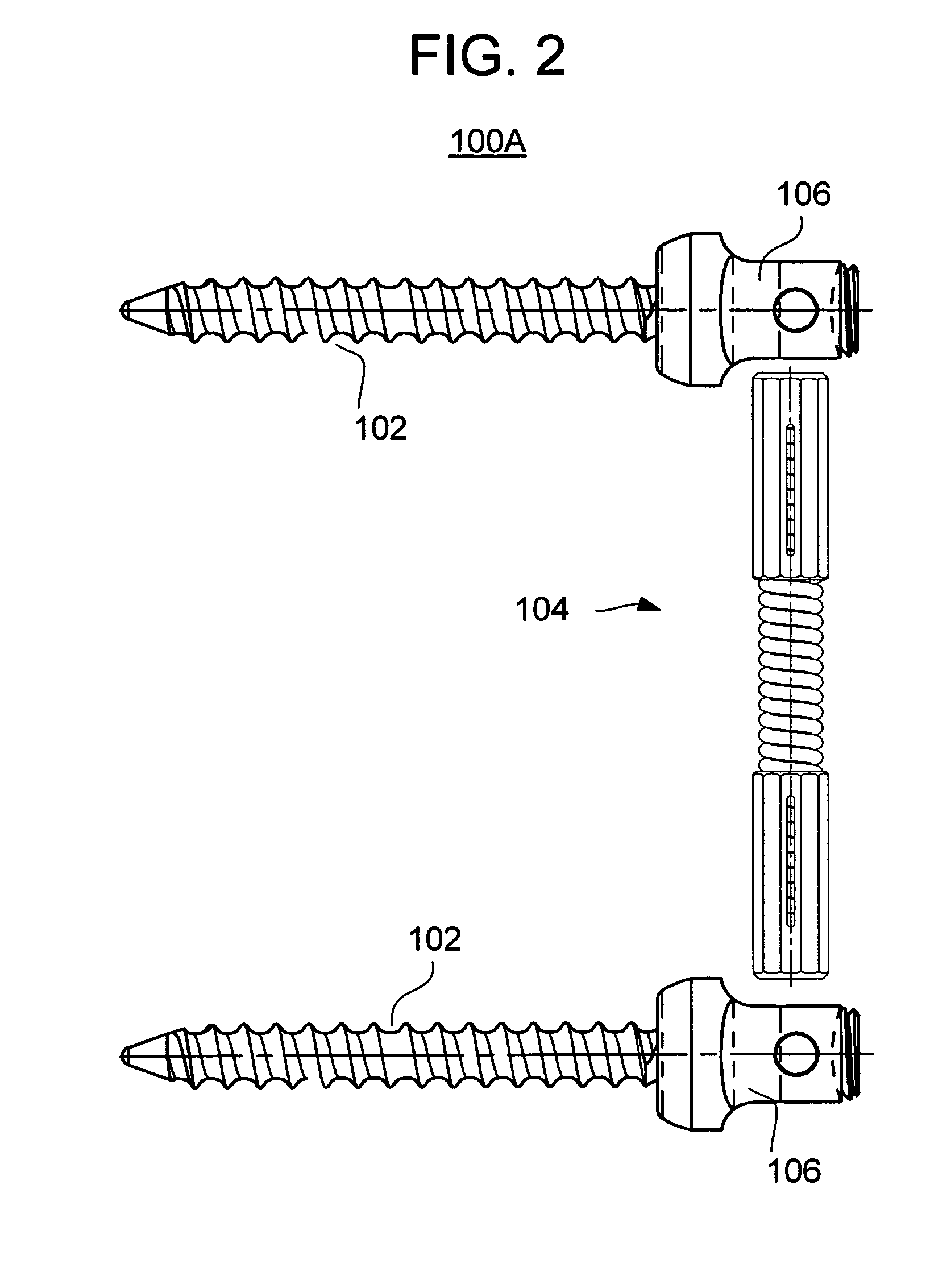Methods and apparatus for vertebral stabilization using sleeved springs
a technology of vertebral stabilization and sleeve springs, which is applied in the field of vertebral stabilization of a spine using springs, can solve the problems of compromising a person's quality of life, most common and often debilitating conditions affecting millions of people, and back pain
- Summary
- Abstract
- Description
- Claims
- Application Information
AI Technical Summary
Benefits of technology
Problems solved by technology
Method used
Image
Examples
Embodiment Construction
[0038]FIGS. 1A-B illustrate an embodiment of a spinal stabilizer system 100 in use in accordance with one or more aspects of the present invention. In this embodiment, the system 100 includes two stabilizing elements 100A, 100B (also referred to as dynamic stabilizers) that are designed for single level spinal stabilization, preferably from the posterior of the spine. The posterior stabilizer system 100 is preferably used at the early to moderate stages of the spinal disc degeneration disease process to inhibit posterior disc, vertebral foramen, and inferior vertebral notch collapse with the minimal (semi-constrained) restriction of the vertebral body biological range of motion.
[0039]It is understood that the use of the various embodiments of the invention discussed herein has been directed to a specific application of stabilizing the spine; however, other applications are contemplated without departing from the scope of the invention. Indeed, any application in which a spring eleme...
PUM
 Login to View More
Login to View More Abstract
Description
Claims
Application Information
 Login to View More
Login to View More - R&D
- Intellectual Property
- Life Sciences
- Materials
- Tech Scout
- Unparalleled Data Quality
- Higher Quality Content
- 60% Fewer Hallucinations
Browse by: Latest US Patents, China's latest patents, Technical Efficacy Thesaurus, Application Domain, Technology Topic, Popular Technical Reports.
© 2025 PatSnap. All rights reserved.Legal|Privacy policy|Modern Slavery Act Transparency Statement|Sitemap|About US| Contact US: help@patsnap.com



